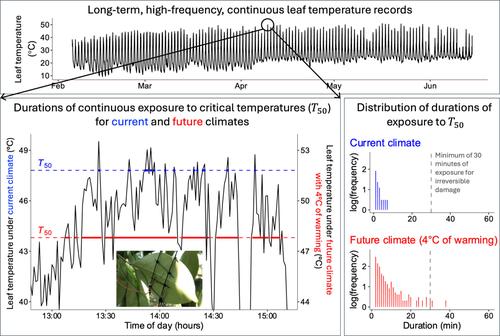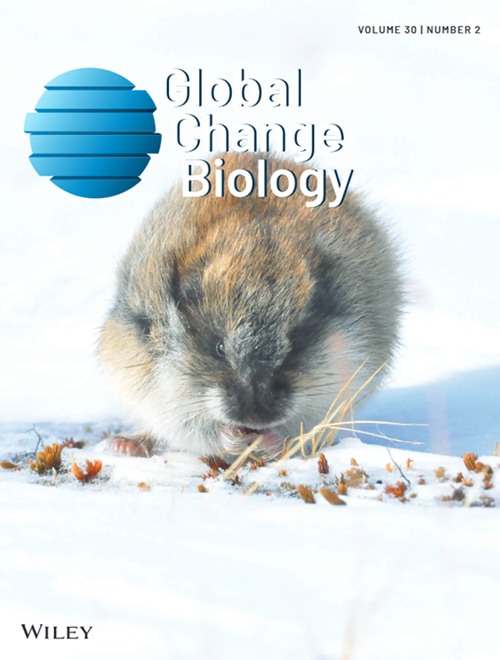Leaf Temperatures in an Indian Tropical Forest Exceed Physiological Limits but Durations of Exposures Are Currently Not Sufficient to Cause Lasting Damage
IF 10.8
1区 环境科学与生态学
Q1 BIODIVERSITY CONSERVATION
引用次数: 0
Abstract
Increasing temperatures in the tropics will reduce performance of trees and agroforestry species and may lead to lasting damage and leaf death. One criterion to determine future forest resilience is to evaluate damage caused by temperature on Photosystem-II (PSII), a particularly sensitive component of photosynthesis. The temperature at which 50% of PSII function is lost (T50) is a widely used measure of irreversible damage to leaves. To assess vulnerability to high temperatures, studies have measured T50 or leaf temperatures, but rarely both. Further, because extant leaf temperature records are short, duration of exposure above thresholds like T50 has not been considered. Finally, these studies do not directly assess the effect of threshold exceedance on leaves. To understand how often, and how long, leaf temperatures exceed critical thresholds, we measured leaf temperatures of forest and agroforestry species in a tropical forest in the Western Ghats of India where air temperatures are high. We quantified species-specific physiological thresholds and assessed leaf damage after high-temperature exposure. We found that leaf temperatures already exceed T50. However, continuous exposure durations above critical thresholds are very skewed with most events lasting for much less than 30 min. As T50 was measured after a 30-min exposure, our results suggest that threshold exceedances and exposure durations for lasting damage are currently not reached and will rarely be reached if maximum air temperatures increase by 4°C. Consistent with this, we found only minor indications of heat damage in the forest species. However, there were indications of heat-induced reduction in PSII function and damage in the agroforestry leaves which have lower T50. Our findings suggest that, for forest species, while high-temperature thresholds may be surpassed, durations of exposure above thresholds remain short, and therefore, are unlikely to lead to irreversible damage and leaf death, even under 4°C warming.

求助全文
约1分钟内获得全文
求助全文
来源期刊

Global Change Biology
环境科学-环境科学
CiteScore
21.50
自引率
5.20%
发文量
497
审稿时长
3.3 months
期刊介绍:
Global Change Biology is an environmental change journal committed to shaping the future and addressing the world's most pressing challenges, including sustainability, climate change, environmental protection, food and water safety, and global health.
Dedicated to fostering a profound understanding of the impacts of global change on biological systems and offering innovative solutions, the journal publishes a diverse range of content, including primary research articles, technical advances, research reviews, reports, opinions, perspectives, commentaries, and letters. Starting with the 2024 volume, Global Change Biology will transition to an online-only format, enhancing accessibility and contributing to the evolution of scholarly communication.
 求助内容:
求助内容: 应助结果提醒方式:
应助结果提醒方式:


